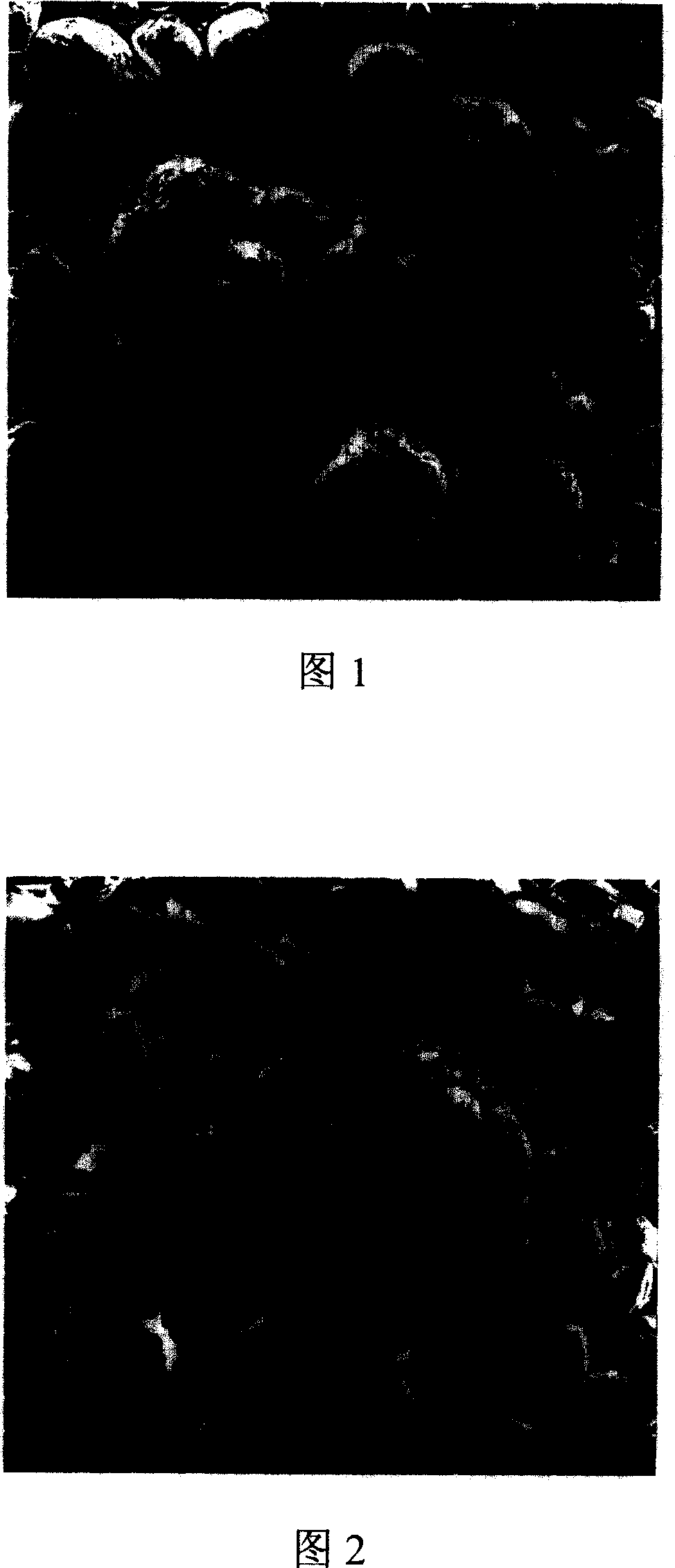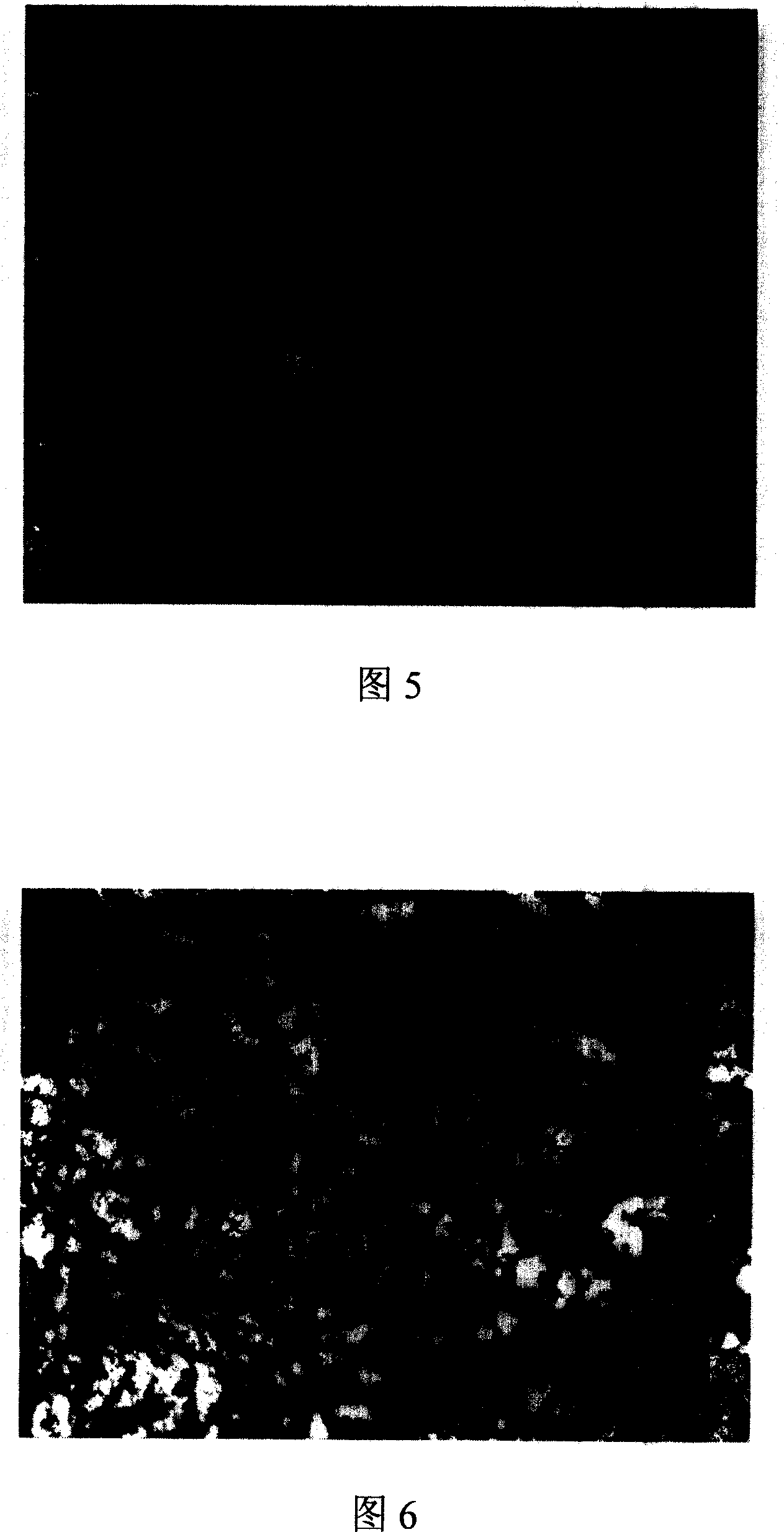Aluminum alloy surface strengthening method using laser melting and coating
An aluminum alloy surface, laser cladding technology, applied in laser welding equipment, metal processing equipment, metal material coating technology and other directions, can solve the problems of excessive melting of aluminum alloy substrate, cracking of cladding layer, low melting point, etc. Prevent excessive melting and collapse, reduce interface thermal stress, good metallurgical compatibility
- Summary
- Abstract
- Description
- Claims
- Application Information
AI Technical Summary
Problems solved by technology
Method used
Image
Examples
Embodiment 1
[0064] 1. The surface pretreatment of aluminum alloy substrates, the process is as follows: first, use 500# metallographic sandpaper to polish the surface to be clad, then immerse in 10% sodium hydroxide aqueous solution for 2 minutes, take it out and wash it with clean water; the aluminum alloy substrate It is ZL102 alloy.
[0065] 2. Preparation of laser cladding materials: Al-Si alloy powder and SiC ceramic powder are used as laser cladding materials. The composition of Al-Si alloy is: Si content 10-15 (wt%), particle size: -140-+325. SiC particle size: -200. Prepare the cladding material according to the volume ratio of Al-Si alloy and SiC as 1:4, and then put it into a drum-type powder mixer for powder mixing, and the powder mixing time is 8 hours;
[0066] 3. Cladding preparation: the mixed cladding material is made into a paste with water glass, and coated on the surface of the aluminum alloy substrate, the thickness of the coating layer is 0.8mm, and dried in an argon...
Embodiment 2
[0069] 1. Substrate surface pre-treatment, the process is: first use 500# metallographic sandpaper to polish the surface to be clad, then immerse in 5% sodium hydroxide aqueous solution for 5 minutes, take it out and wash it with water; in order to prevent rapid oxidation again, Adopt nitric acid passivation process. The base material is ZL104 alloy.
[0070] 2. Preparation of laser cladding materials: Al-Si alloy powder and SiC ceramic powder are used as laser cladding materials. The composition of Al-Si alloy is: Si content 10~15, particle size: -140~+325. SiC particle size: -200. Prepare the cladding material according to the volume ratio of Al-Si alloy and SiC as 1:3, and then put it into a drum-type powder mixer for mixing powder, and the mixing time is 10h;
[0071] 3. Cladding preparation: make the mixed cladding material into a paste with water glass, coat it on the surface of the aluminum alloy substrate, the thickness of the coating layer is 1.0 mm, and dry it in a...
Embodiment 3
[0074] 1. The surface pretreatment of aluminum alloy substrates, the process is: first use 800# metallographic sandpaper to polish the surface to be clad, then immerse in 10% sodium hydroxide aqueous solution for 2 minutes, take it out and wash it with water; in order to prevent rapid Oxidation, passivation with nitric acid. The base material is LY12 alloy.
[0075] 2. Preparation of laser cladding materials: Al-Si alloy powder and SiC ceramic powder are used as laser cladding materials. The composition of Al-Si alloy is: Si content 10~15, particle size: -140~+325. SiC particle size: -200. Prepare the cladding material according to the volume ratio of Al-Si alloy and SiC as 1:2, and then put it into a drum-type powder mixer for powder mixing, and the powder mixing time is 10h;
[0076] 3. Cladding preparation: make the mixed cladding material into a paste with water glass, and coat it on the surface of the substrate. The thickness of the coating layer is 1.2mm, and dry it in...
PUM
| Property | Measurement | Unit |
|---|---|---|
| Thickness | aaaaa | aaaaa |
| Thickness | aaaaa | aaaaa |
| Thickness | aaaaa | aaaaa |
Abstract
Description
Claims
Application Information
 Login to View More
Login to View More - R&D
- Intellectual Property
- Life Sciences
- Materials
- Tech Scout
- Unparalleled Data Quality
- Higher Quality Content
- 60% Fewer Hallucinations
Browse by: Latest US Patents, China's latest patents, Technical Efficacy Thesaurus, Application Domain, Technology Topic, Popular Technical Reports.
© 2025 PatSnap. All rights reserved.Legal|Privacy policy|Modern Slavery Act Transparency Statement|Sitemap|About US| Contact US: help@patsnap.com



